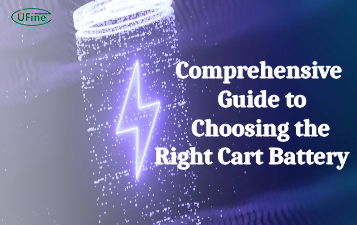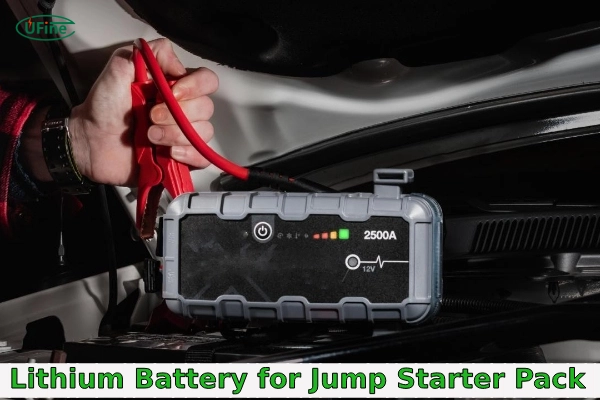In today’s fast-paced world, the last thing you want is to find yourself stranded with a dead car battery. A jump starter pack can be a lifesaver, but what happens when its lithium battery wears out? This comprehensive guide will delve into everything you need about replacement lithium batteries for jump starter packs. We’ll explore their benefits, how to choose the right one, and tips for maintaining it for optimal performance.
Part 1. Understanding jump starter packs
Jump starter packs are portable devices that provide the necessary power to start a vehicle when its battery fails. They are instrumental in emergencies and can save you from waiting for roadside assistance. Most modern jump starter packs use lithium-ion batteries for their efficiency and compact size.
Why lithium-ion batteries?
Lithium-ion batteries have become the standard for jump starter packs for several reasons:
- High Energy Density: They store more energy in a smaller space than traditional lead-acid batteries.
- Longer Lifespan: Lithium-ion batteries generally last longer and have more charge cycles.
- Lightweight: They are significantly lighter, making the jump starter pack more portable.
- Fast Charging: You can quickly recharge these batteries, getting you back on the road faster.
Part 2. Signs your jump starter pack needs a new battery
Before diving into replacement options, it’s crucial to recognize when your battery needs replacing. Here are some common signs:
- Reduced Jump Starting Power: If your jump starter struggles to start your vehicle, it might be time for a new battery.
- Shortened Battery Life: If the battery doesn’t hold a charge as long as it used to, replacement is likely necessary.
- Physical Damage: Any visible swelling or leakage indicates that you must replace the battery immediately.
Part 3. Choosing the correct replacement battery
Selecting the correct replacement lithium battery for your jump starter pack can be overwhelming. Here’s a step-by-step guide to help you make an informed decision:
1. Check Compatibility
Ensure that the replacement battery is compatible with your specific jump starter model. Refer to the manufacturer’s specifications for exact details.
2. Battery Capacity
Look for a battery with a higher mAh (milliamp-hour) rating. A higher capacity means more power and more extended usage between charges.
3. Cranking Amps
The rating of cranking amps (CA) or cold cranking amps (CCA) indicates the battery’s ability to start an engine in freezing temperatures. Ensure the replacement battery meets or exceeds the CA/CCA rating of the original battery.
4. Quality and Brand
Opt for reputable brands known for their quality and reliability. While they might be more expensive, they often provide better performance and longevity.
5. Warranty
Check if the replacement battery comes with a warranty. A good warranty can provide peace of mind and protection against manufacturing defects.
Part 4. Installation of lithium replacement batteries and safety tips
Replacing the battery in your jump starter pack is generally straightforward. Still, it’s essential to follow safety guidelines to avoid accidents.
1. Read the Manual
Always start by reading the user manual of both your jump starter pack and the replacement battery. This will provide specific instructions and safety precautions.
2. Use Proper Tools
Ensure you have the right tools for the job. Usually, a screwdriver and pliers are sufficient.
3. Disconnect power
Before starting, ensure the jump starter pack is turned off and disconnected from any power source.
4. Remove the Old Battery
Carefully remove the old battery, paying attention to its polarity and connection. Dispose of it properly following local regulations.
5. Install the New Battery
Install the new battery, ensuring the connections are secure and the polarity is correct. Double-check all connections before closing the case.
6. Test the Jump Starter Pack
After installation, test the jump starter pack to ensure it’s working correctly. Charge it fully before its first use.
Part 5. Maintaining your replacement lithium battery
To maximize the lifespan and performance of your new lithium battery, follow these maintenance tips:
1. Regular Charging
Even if you don’t use the jump starter pack frequently, charge it every few months to maintain the battery’s health.
2. Avoid Extreme Temperatures
Store the jump starter pack in a cool, dry place. Extreme temperatures can degrade the battery more quickly.
3. Clean Connections
Keep the battery terminals clean and free from corrosion. Use a dry cloth to wipe them periodically.
4. Do Not Overcharge
Overcharging can damage the battery. Use a charger with an automatic shut-off feature to prevent this.
Part 6. Advantages of replacing your lithium battery
Replacing the lithium battery in your jump starter pack has several benefits:
1. Enhanced Performance
A new battery will restore the jump starter pack to its original performance levels, ensuring reliable starts.
2. Cost-Effective Solution
Replacing the battery is more affordable than buying a new Jumpstarter pack. You can save money while still enjoying the benefits of a fully functional device.
3. Environmental Impact
You reduce electronic waste by replacing the battery instead of the entire unit. Proper disposal and recycling of old batteries also help protect the environment.
4. Extended Lifespan of Jump Starter Pack
A new battery can extend the overall lifespan of your jump starter pack, making it a more sustainable and economical option in the long run.
Common Mistakes to Avoid
While replacing your lithium battery, avoid these common pitfalls:
1. Ignoring Compatibility
An incompatible battery can damage your jump starter pack and void any warranties. Always verify Compatibility before purchasing.
2. Skipping Safety Precautions
Failing to follow safety guidelines can lead to accidents or damage to the battery. Always handle lithium batteries with care.
3. Improper Disposal
Lithium batteries can be hazardous if not disposed of correctly. Follow local regulations for battery disposal to prevent environmental harm.
4. Neglecting Regular Maintenance
Even with a new battery, paying attention to regular maintenance can shorten its lifespan. Stick to a maintenance routine to maintain your jump starter pack.
Part 6. Future trends in lithium battery technology
Lithium battery technology continuously evolves, promising even more efficient and robust solutions for jump starter packs. Here are some trends to watch:
1. Solid-State Batteries
Experts expect solid-state batteries to replace traditional lithium-ion batteries shortly. They offer higher energy density, faster charging times, and improved safety.
2. Nanotechnology
Nanotechnology could revolutionize battery design by increasing the surface area for chemical reactions, leading to higher capacity and faster recharge rates.
3. Wireless Charging
Advancements in wireless charging technology might soon allow for convenient, cable-free charging of jump starter packs, enhancing user convenience.
4. Eco-Friendly Materials
Research is ongoing into developing batteries using more sustainable and eco-friendly materials, reducing their environmental impact even further.
Part 7. FAQs
-
How long do lithium batteries in jump starter packs last?
Lithium batteries in jump starter packs typically last between 3 and 5 years, depending on usage and maintenance. -
Can I use any lithium battery as a replacement?
No, a battery compatible with your specific jump starter model would be best. Always check the manufacturer’s specifications. -
Is it safe to replace the battery myself?
Yes, as long as you follow the proper safety guidelines and instructions. If you need more clarification, seek professional help. -
What should I do with the old battery?
Dispose of the old battery according to local regulations. Many places have designated recycling centers for lithium batteries. -
How often should I charge my jump starter pack?
Even if not in use, charge your jump starter pack every 3 to 6 months to maintain battery health.
Related Tags:
More Articles

Comprehensive Guide to Choosing the Right Cart Battery
Choosing the right cart battery ensures optimal performance and longevity. This guide covers cart battery types and helps you make an informed choice.
The Ultimate Guide to 18650 Button Top Battery
18650 button top batteries are popular for their high energy density and reliability. This guide covers their key features, usage, and maintenance tips.
The Power of Slim: Unveiling the Potential of Flat Lithium Ion Battery
Flat lithium-ion batteries power devices from phones to vehicles. This article explores their design, benefits, types, applications, charging, and safety.
The Comprehensive Guide to Battery Balancing and Battery Balancer
Battery balancing and balancers optimize performance, longevity, and safety. This guide covers techniques and tips for choosing the right balancer.
10 Key Facts About Drone Battery for 2024
Uncover crucial insights with "10 Key Facts About Drone Battery for 2024." Learn the latest trends and essential details on drone batteries.




